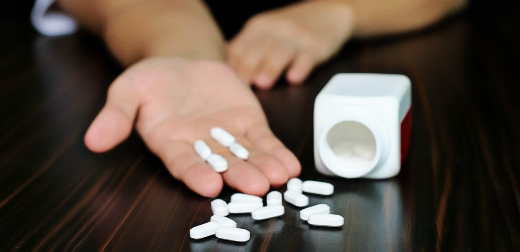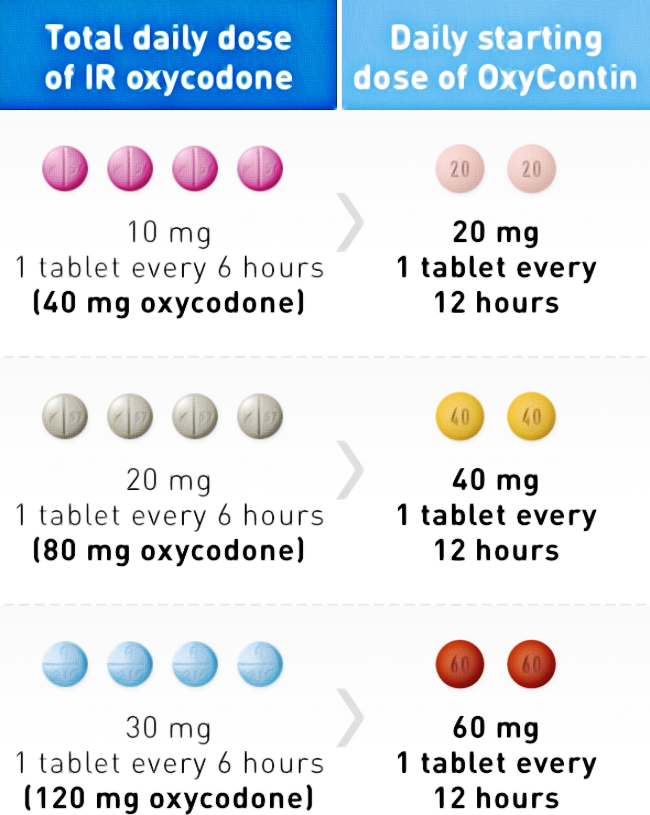Understanding Oxycodone Dosage
Oxycodone is an effective prescription-only opioid pain reliever derived from Thebaine, a chemical found in opium. Oxycodone is commonly used for post-surgery recovery, clinically sensitive pain response, and cancer-related pain. It is also used for other long-standing pain when painkillers like ibuprofen, aspirin, and paracetamol have not worked. Oxycodone is also known by other brand names OxyContin and Oxynorm.
The drug that is mostly prescribed in tablet form to be taken orally. However, Oxycodone is also available as a slow releasing capsules and liquid which you swallow. The drug can also be given as an injection, but this is usually done in health facilities.

Oxycodone works by blocking pain signals traveling along nerves from reaching the brain. Due to its euphoric nature, it is possible to become addicted to the drug. However, this is an uncommon occurrence if you are taking it as prescribed by your doctor.
Forms of Oxycodone
There are three forms of Oxycodone:
- Capsules– the oxycodone capsule contain 5mg, 10 mg, or 20mg of Oxycodone. The capsule forms are a fast-acting option. They are usually taken 4 to 6 times a day.
- Tablets /Oxycodone MG– the Oxycodone tablets contain 5mg, 10mg, 15mg, 30mg, 40mg, 60mg,80mg or 120mg oxycodone. The tablet forms are usually taken 1 to 2 times a day
- Liquid– the liquid Oxycodone contains 5mg of Oxycodone in 5ml or 10mg of Oxycodone in 1ml liquid. The oxycodone liquid is fast-acting forms. The liquid forms are usually taken 4 to 6 times a day.
Oxycodone MG
Compared to other forms of Oxycodone, oxycodone tablets are a slow-release option. They are gradually released into your body over 12 to 24 hours. Oxycodone MG takes longer to start working but lasts the longest. It is, therefore, effective for the management of long-term pain. Oxycodone tablets should be taken at 12 hourly intervals. It must be swallowed whole and not crushed, chewed, or broken.
Additionally, you should not pre-soak, lick, or otherwise wet that tablet before placing it on your mouth. Cutting, chewing, dissolving, or crushing the tablets may result in the uncontrolled delivery of Oxycodone, leading to overdoes or death. It is also advisable to take Oxycodone with or just after a snack or a meal to reduce the chances of feeling sick.

The ideal dosage will depend on the severity of the pain and your previous history of analgesic requirements. Ideally, if the severity of pain increases, it may require an increase in Oxycodone tablets’ dosage. The 5mg, 10mg, 20mg, 30mg, or 120mg tables can either be used alone or in combination to achieve effective pain relief. There are various dosages of Oxycon MG from 5mg, 15mg,20mg,30mg to 120mg tablets:
Oxycodone 5mg
Oxycodone 5mg is the usual starting dose for patients with severe pain. The 5mg tablets are blue, convex, and round tablets labeled OC on one side and 5 on the other. Each 5mg tablet contains 4.5 mg of Oxycodone as 5mg of oxycodone hydrochloride. The use of higher starting doses for patients who are not opioid-tolerant can cause fatal respiratory depression.
Oxycodone 10 mg
You will graduate to the 10mg dosage based on how your body responded to the initial 5mg dose. The oxycodone 10mg is also considered a typical starting dosage if you haven’t been treated with opioid medications before. The 10mg tablets are white, convex tablets labeled OC on one side and 10 on the other side. Each 10mg tablet contains 9.0 mg of Oxycodone as 10mg of oxycodone hydrochloride. The 10 mg Oxycodone tablets also contain hydroxypropyl cellulose.
Oxycodone15 mg
The 15mg tablets are grey, round convex tablets labeled OC on one died, and 15 on the other side. Each 15mg tablet contains 13.5 mg of Oxycodone as 15mg of oxycodone hydrochloride. The 15mg tablets also contain black iron oxide, yellow iron oxide, and red iron oxide.
Oxycodone 20mg
The 20 mg tablet is a pink round convex tablet labeled OC on one side and 20 on the other side. Each 20mg tablet contains 18.0 mg of Oxycodone as 20mg of oxycodone hydrochloride. The 20mg tablet also contains polysorbate 80 and red oxide.
Oxycodone30mg
Opioid-tolerant adult patients can be started on Oxycodone30mg for one week or longer. However, the majority of patients don’t require a dose higher than Oxycodone30mg. The 30 mg tablets are brown, and round convex tablets labeled OC on one side and 30 on the other. Each 30mg tablet contains 27 mg of Oxycodone as 30mg of Oxycodone hydrochloride. The 30mg tablets also contain polysorbate 80, red iron oxide, black iron oxide, and yellow iron oxide.
How often should I take it?
Slow-release Oxycodone tablets should be taken once or twice a day. The tablets can be taken at any time of the day. However, try to take it at the same time each day and ensure you space doses evenly in an interval of 12 hours.
How long does Oxycodone stay in your system?
Oxycodone is detectable in urine for 1 to 4 days, and you will test positive for the drug within one to three hours after taking it. It is noticeable in saliva within minutes after taking it. Like other opioids, Oxycodone can be detected in your hair for up to 90 days.
Key Takeaway
It is essential to individually titrate Oxycodone to a dosage that provides adequate analgesia and minimize adverse reactions. It is also vital for health care professionals to continually reevaluate patients receiving Oxycodone to assess the following:
- Maintenance of pain controls
- Signs and symptoms of opioid withdrawal
- Adverse reactions
- Development of sedition
In a nutshell, the correct dosage for a patient is that which controls the pain and is well tolerated for a 12-hour interval. Should a higher dose be necessary, increases are made in 25 to 50 percent. Oxycodone should be prescribed only by doctors knowledgeable about the use of potent opioids to manage chronic pain. Your dosage will likely depend on the following:
- Your age
- The condition being treated
- How severe your condition is
- Other medical conditions you have
- Your reaction to the first dose
- Risk factors for addiction, abuse, and misuse
Should unacceptable opioid-related adverse reactions observed, it is advisable to consider the reduction of the dosage. Adjust the dosage accordingly until an appropriate balance between pain management and opioid-related adverse reactions is achieved.
Sources
https://www.medicines.org.uk/emc/product/4682/smpc#gref
https://www.medicalnewstoday.com/articles/324098
https://www.nhs.uk/medicines/oxycodone/
https://www.medicines.org.uk/emc/medicine/29384#gref

